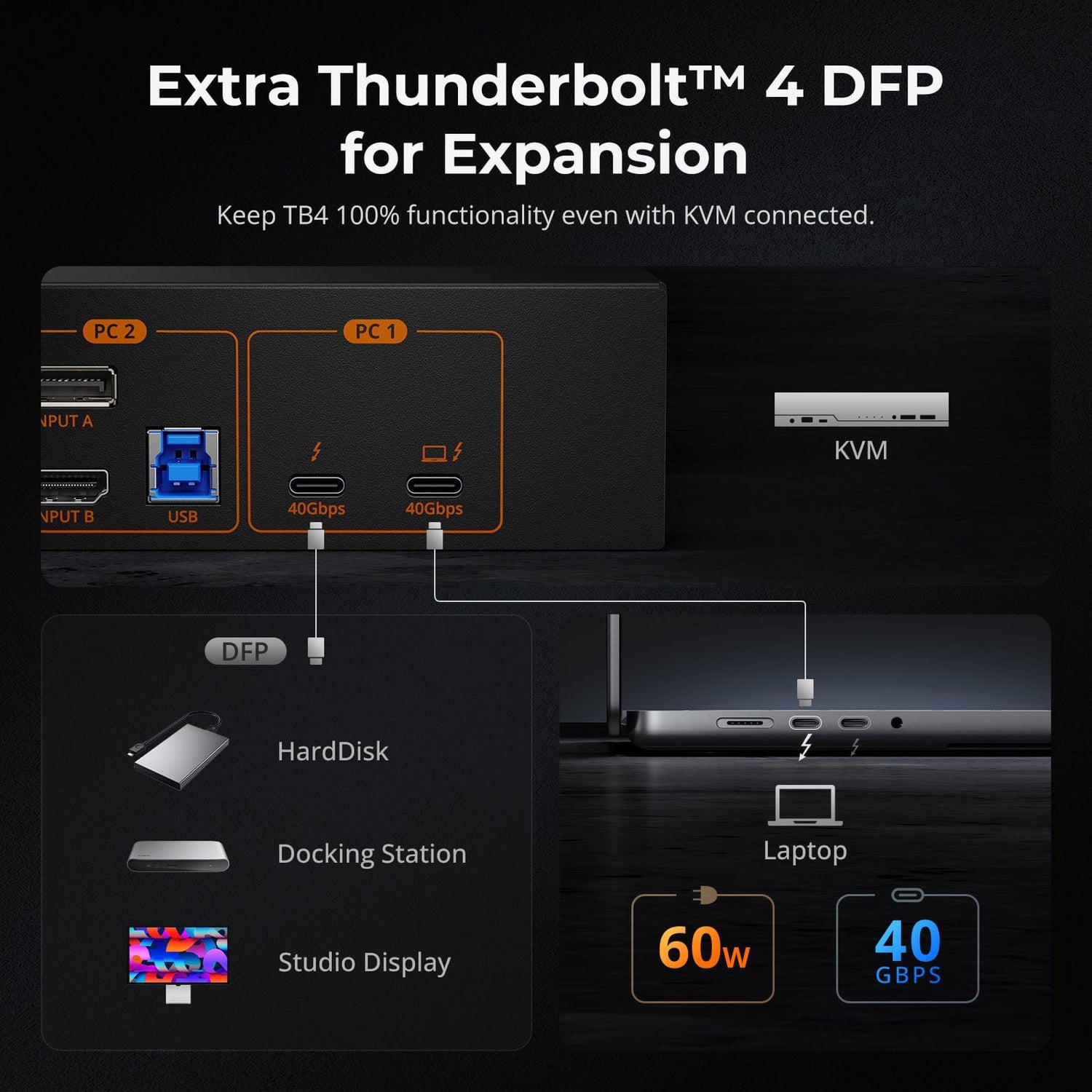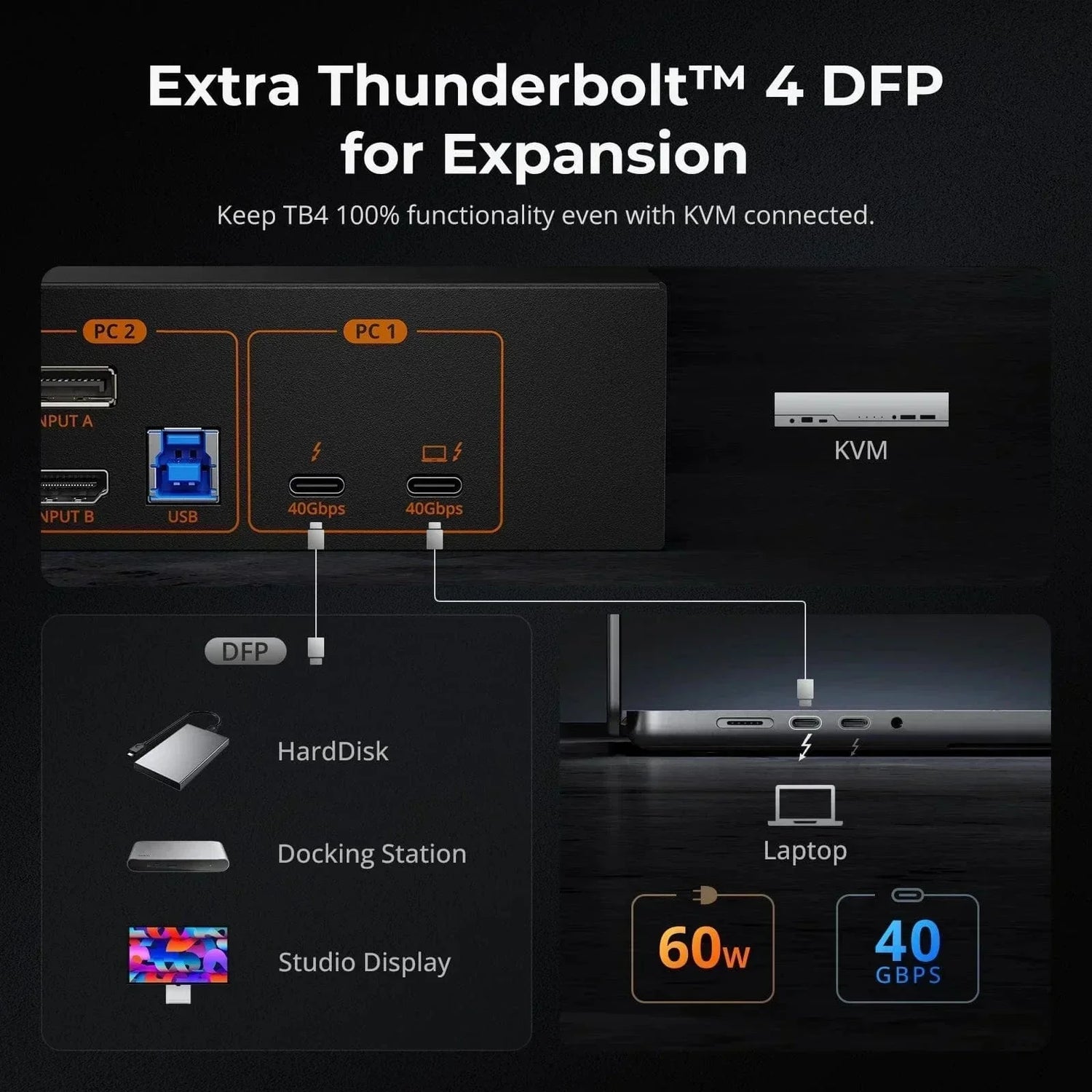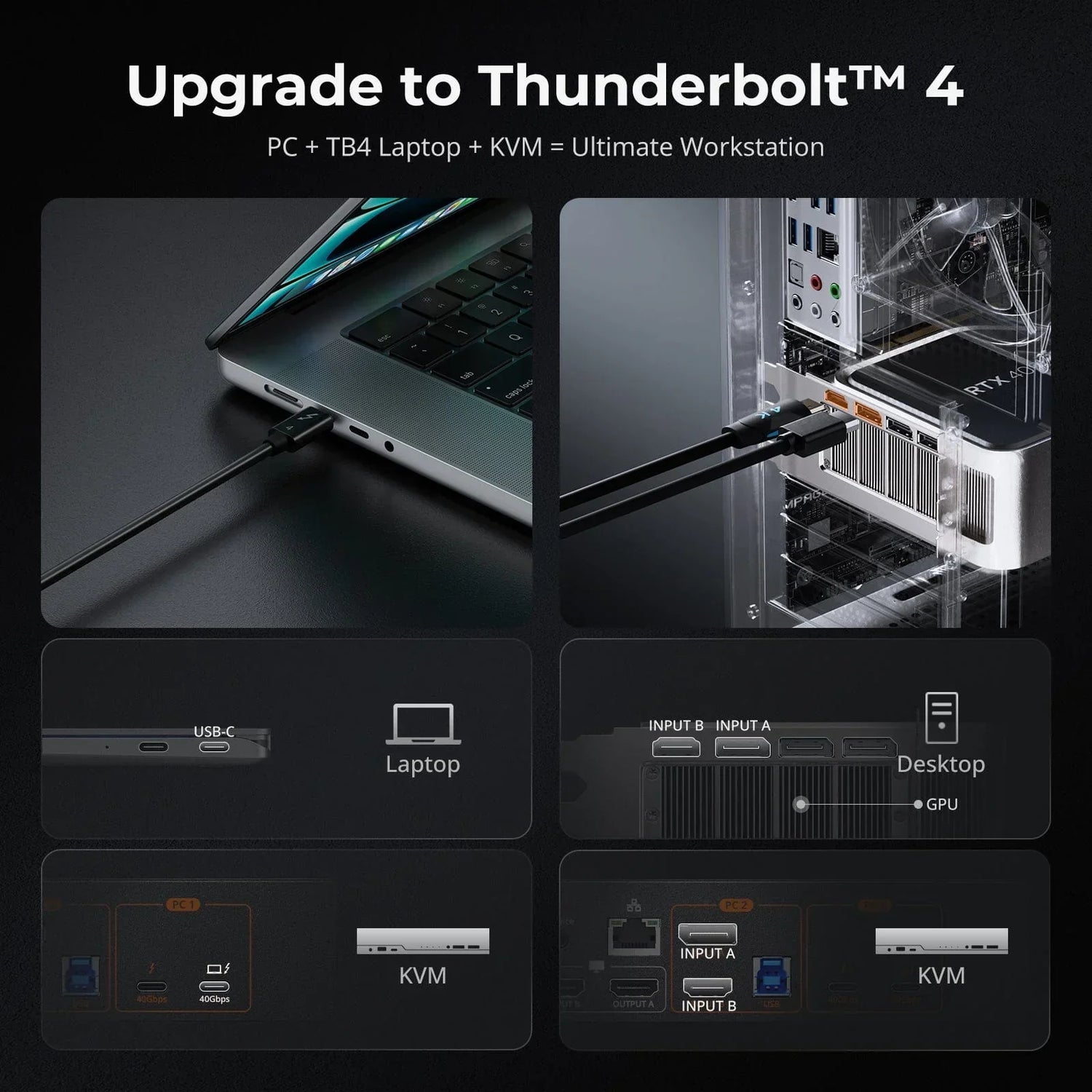In the digital era, connectors are no longer mere bridges between devices; they represent data transfer speeds, efficient power delivery, and the limitless potential of device interconnectivity. This article delves into two highly acclaimed connection methods: USB-C and Thunderbolt. While they may share a similar physical appearance, they exhibit significant differences in functionality and applications. Understanding their unique characteristics and use cases can help us choose the appropriate connection method for our devices.
USB-C: The Power of Universal Connectivity
USB-C, as the standard connector for modern devices, leads the trend in connection technology. Its distinctive reversible oval design makes plugging in more convenient. However, USB-C's advantages go beyond this.
Regarding data transfer speeds, USB-C demonstrates remarkable capabilities. The latest USB 3.2 Gen 2×2 version offers transfer speeds of up to 20 Gbps, enabling efficient transfer of large files. Whether backing up sizable data or transferring high-resolution videos, USB-C accomplishes tasks instantly, greatly enhancing work efficiency.
Yet, one of the most noteworthy features of USB-C is its power delivery capability. It can provide power to external devices and even charge connected devices. With a power transmission of up to 100W, it's an ideal choice for powering high-power devices like laptops and smartphones. This means you can accomplish data transfer and charging through a single cable, significantly reducing cable clutter.
The versatility of USB-C is also its uniqueness. It works with various devices, including smartphones, laptops, tablets, external hard drives, and even some gaming consoles. This universality offers users convenience, as a single connector can handle multiple devices.
Thunderbolt: Symbol of Powerful Connectivity
Thunderbolt, a collaboration between Intel and Apple, sets the benchmark for high-speed data transfer and robust connection capabilities. It not only surpasses USB-C in performance but also offers powerful features for professional and demanding users.
Thunderbolt's standout feature is its data transfer speed. The latest Thunderbolt 4 version boasts data transfer speeds of up to 40 Gbps, twice that of the fastest USB-C standard. This makes it suitable for professional applications like video editing and large file transfers. For users with stringent demands for data transfer speed and efficiency, Thunderbolt is an irreplaceable choice.
Another unique aspect of Thunderbolt is its external GPU (eGPU) support. This technology enables users to enhance the graphics performance of laptops and desktops by connecting an external graphics card. For gamers and graphics professionals, this is a game-changer. Through Thunderbolt, an ordinary laptop can unleash powerful graphics processing capabilities, achieving the ultimate gaming and design experience.
Chaining is another highlight of Thunderbolt. It allows users to daisy-chain multiple Thunderbolt devices, simplifying cable management and reducing desktop clutter. You can connect multiple external hard drives, monitors, external GPUs, and more devices through a single connector, creating an efficient and tidy workspace.
"USB-C and Thunderbolt are more than just ports; they are gateways to a world of connectivity and potential. USB-C's ability to handle various devices with high-speed data transfer and power delivery simplifies our daily tech interactions. Thunderbolt's unmatched data transfer speeds and unique features like eGPU support pave the way for high-performance computing and creative endeavors." — from <TechSpot>
USB-C and Thunderbolt in KVM Switch Applications
Beyond individual device applications, USB-C and Thunderbolt also impact our device connection methods at a broader level. In the realm of KVM (keyboard, video, mouse) switches, these two connection methods play a significant role.
KVM switches provide users with the ability to switch between multiple computers, and USB-C and Thunderbolt's widespread application is evident here as well. Modern KVM switches often come equipped with USB-C and Thunderbolt interfaces, allowing users to conveniently connect various devices. This means you can connect different types of computers, laptops, tablets, and more to a single KVM switch, achieving switching through a single keyboard and mouse, significantly enhancing work efficiency.
This application brings evident advantages to users. First, you don't need to equip each computer with separate keyboards and mice, saving device costs. Secondly, through USB-C and Thunderbolt interfaces, KVM switches can achieve faster data transfers, maintaining a strong connection quality. Most importantly, you can use the same keyboard, mouse, and monitor on different computers, creating a cleaner and more efficient work environment.
Conclusion: Choosing the Right Connection Unleashes Infinite Possibilities
USB-C and Thunderbolt represent the pinnacle of modern connection methods. USB-C stands out with its universality, high-speed data transfer, and power delivery capabilities, catering to everyday connection needs. On the other hand, Thunderbolt excels in data transfer speed, external GPU support, and daisy-chaining capabilities, suitable for professionals and high-performance demands. When choosing a connection method, it's crucial to consider actual needs and use cases. Whether seeking versatility or aiming for ultra-high performance, the right connection method will complement your devices perfectly. When purchasing accessories and peripherals, be sure to check specifications to ensure compatibility with your devices, unlocking limitless potential for your devices.




